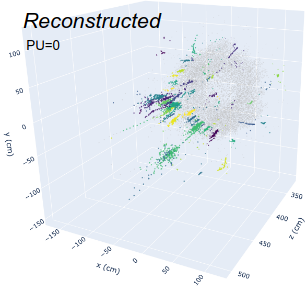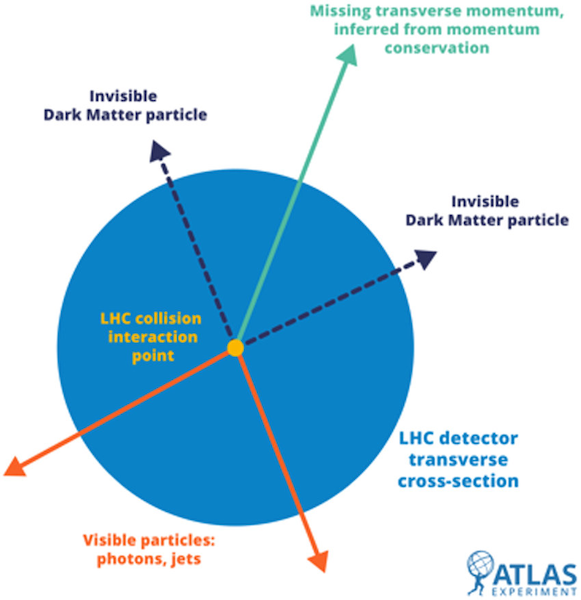Research
A brief introduction to the research projects I'm currently working on!


GNN-based end-to-end reconstruction in the CMS Phase 2 High-Granularity Calorimeter
The High-Luminosity Large Hadron Collider (HL-LHC) project poses an exceptional challenge for particle-shower reconstruction. With 200 proton-proton interactions per bunch crossing, it is unclear whether traditional, i.e. hand-written, clustering algorithms can satisfy computing constraints while exploiting the full physics potential of improved detector technologies. Performing particle reconstruction with machine-learning algorithms can provide a solution by making full use of hardware acceleration and advanced pattern-recognition techniques. In this paper, we present a machine learning-based reconstruction algorithm for the CMS Phase 2 High-Granularity Calorimeter (HGCAL). The algorithm is tested in a multiparticle environment derived from simulated tau lepton decays with no pileup. This algorithm is a stepping stone towards a reconstruction algorithm that yields the necessary physics performance and performs within computing constraints in the projected 200 PU environment.
Paper: arXiv:2203.01189
Code: https://github.com/tklijnsma/cmspepr_hgcal_core

GNN for MET Reconstruction in Dark Matter Searches
As it has been previously stated, DM cannot be seen nor interacted with. Consequently, particle detectors can only detect particles that belong to the 15% "visible" matter. Therefore, to be able to "see" these invisible particles, physicists use a variety of techniques to indirectly detect them. One of these techniques is the Missing Transverse Momentum (MET) reconstruction. As protons are accelerated, they have a given momentum; by conservation of momentum, the total momentum of the system should be the same before and after the collision. If DM particles are produced, they will not interact with the detector, showing an imbalance in the transverse momentum, a "missing" transverse momentum, i.e, MET [4]. The presence of MET means that some of the decaying particles went undetected, implying the presence of invisible DM particles. However, in densely packed particle production events, such as the ones that will be produced at the HL-LHC, MET reconstruction can be challenging, as the more particles there are the harder it is to identify the originating particle.
A GNN architecture capable of reconstructing MET at any particle detector is proposed. As GNNs take into account the relationship between the particles rather than just the particles themselves, as required by conservation of momentum, they are the ideal tool for this task. Preliminary studies with GNNs have shown promising results, but no model has been implemented with real data so far. A working prototype model of a GNN for MET reconstruction has been designed, which will be implemented on an actual search for DM using CERN's real collision data.
Paper: Coming soon!
Code: https://github.com/frankeprince/deepmetv2